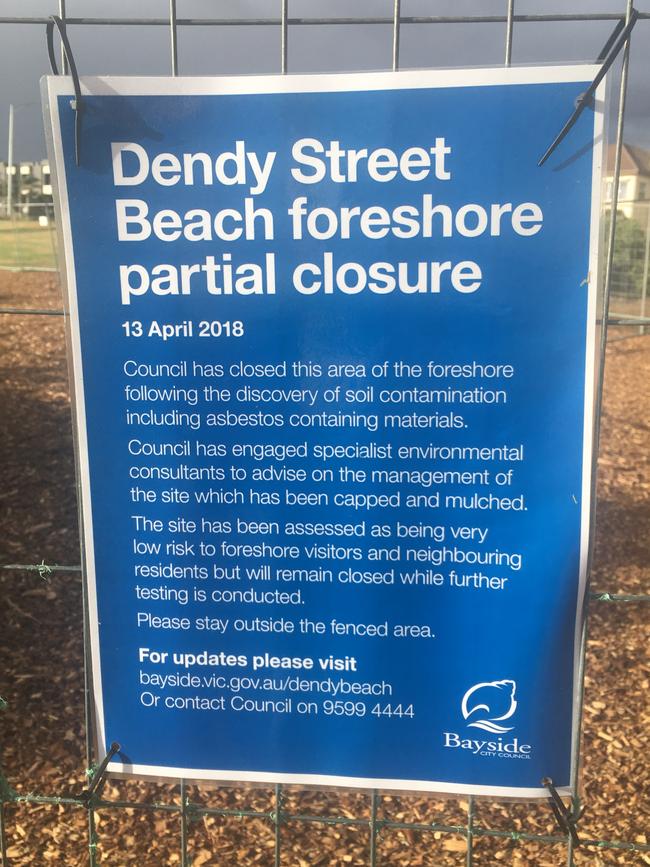EPA closes part of Brighton Dendy Beach foreshore after toxins found in soil
Part of Brighton’s iconic Dendy Beach foreshore has been has been fenced off after asbestos was found on the site.

Inner South
Don't miss out on the headlines from Inner South . Followed categories will be added to My News.
- Beach box asbestos fears
- Asbestos work halts start of netball season
- Iconic Brighton beach boxes up for grabs
- Big brother for bathing boxes?
Part of Brighton’s Dendy Street Beach foreshore has been closed after asbestos was found on site.
A sign was erected last Friday — just days after the Leader contacted Bayside Council about potential contaminants.
It says the foreshore between Wellington St and Keith Court has been closed after the “discovery of soil contamination including asbestos-containing materials”.
The asbestos, as well as coal tar, were found during an archaeological excavation in January.
The Environment Protection Authority is now investigating after former public health worker Alison Joseph flagged concerns about this and other potentially contaminated areas in Bayside, including a current school site.
“There could be a real risk to health depending on how much remediation work has been done,” Ms Joseph said.
“I am concerned the council is also contemplating a rain garden at Dendy Beach, without a clear understanding of contaminated soil that may be in there.”

Bayside Council’s environment director Steven White said the asbestos was found several metres below the surface as part of works for a cultural heritage plan study.
He said an asbestos specialist had found no airborne substances.
“The site will remain closed while further testing is conducted (to) determine if any further excavation or soil removal is required,” Mr White said.
Other sites being investigated include a gas works site that operated in New St on the current Brighton Grammar Junior School site from 1877 to the 1950s, and one on the corner of Wells and Burrows streets from 1887 to the inter-war period.
It is believed Melbourne Gas Co also owned land at Elsternwick Park, where a wetlands park was recently approved by councillors, but it is unclear whether a gas works was ever built.
EPA southern metro manager Marleen Mathias said while it was common for gasworks wastes, including tars, oils, oxide wastes and heavy metals, to be buried on former gas works sites, the “risks to human health may be low”.
“Some of these contaminants are considered hazardous substances, however it does not automatically mean that a human health risk exists,” Ms Mathias said.


